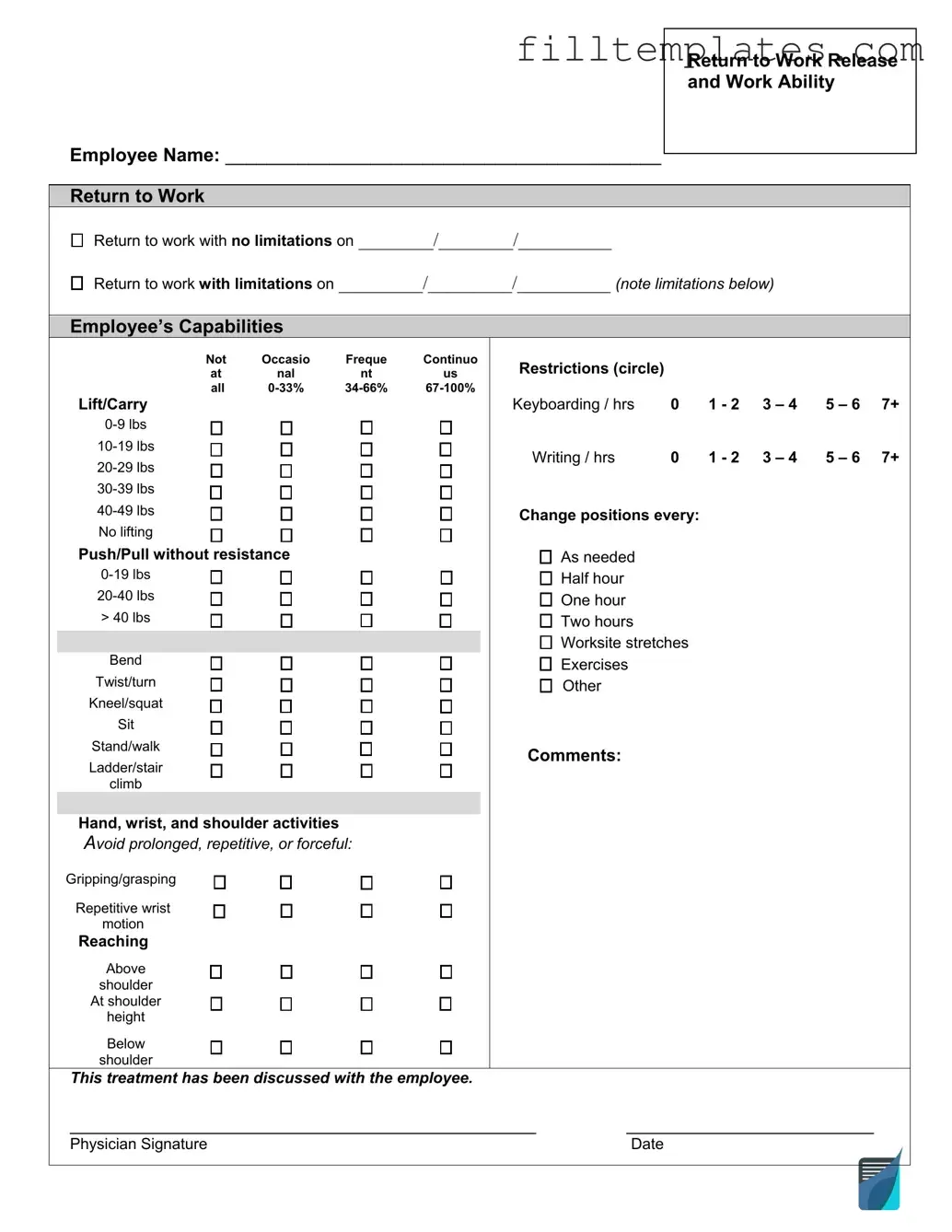The Work Release form serves as a crucial document in various employment and legal scenarios, allowing individuals to request permission to engage in work activities outside of their usual obligations or restrictions. This form is often used by individuals who are currently incarcerated, on probation, or under certain legal constraints, enabling them to seek employment opportunities that can aid in their rehabilitation and reintegration into society. Key aspects of the Work Release form include the applicant's personal information, details about the job they wish to pursue, and the reasons for the request. Additionally, the form typically requires signatures from both the applicant and relevant authorities, ensuring that all parties are aware of the conditions and responsibilities involved. Understanding the importance of this form can empower individuals to take proactive steps towards building a stable future, while also highlighting the role of the legal system in supporting workforce participation for those facing unique challenges.

